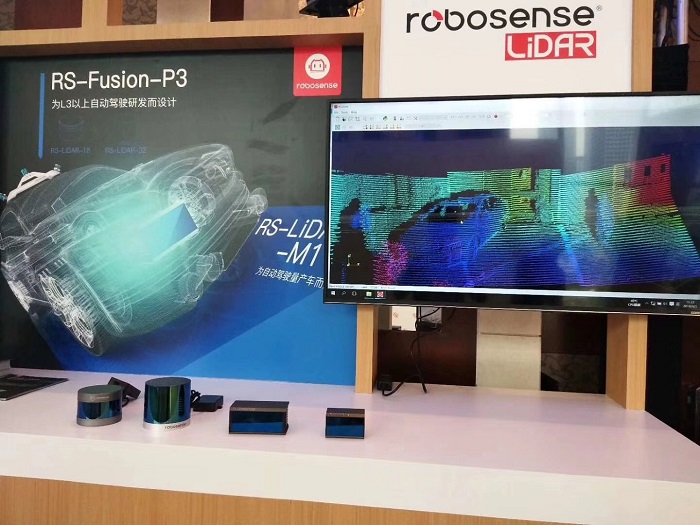By Warren Miller, contributing writer
RoboSense recently unveiled its new RS-IPLS Intelligent Perception LiDAR System, claiming the first hardware and software algorithm-based sensory solution for self-driving vehicles. The RS-IPLS combines microelectromechanical (MEMS) solid-state LiDAR technology with an AI-based deep-learning algorithm to provide high-performance awareness for autonomous vehicles at a fraction of the cost of more traditional LiDAR systems.
LiDAR technology has been implemented in autonomous vehicles since their inception — it provides more accurate and detailed representations of a vehicle’s surroundings than radar and is a more apt solution than optical cameras, which often struggle at night or in poorly lit conditions. These types of LiDAR systems have traditionally featured multiple distinct components and are prohibitively expensive.

“LiDAR needs a self-revolution,” said Mark Qiu, co-founder of RoboSense, in a statement. “The market needs a car-grade product that can be mass-produced in the tens and hundreds of thousands. You have to guarantee low cost and provide high performance to ensure the safety of your vehicle. This has driven us to create a whole new sensor system technology based on the perfect extraction of environmental information and large-scale perception of the environment with the constant capture of areas of interest, focusing on effective information. The new RoboSense RS-IPLS MEMS based technology is intelligent, accurate, lower-cost, and faster — and is poised to take over the market.”
Featuring real-time data pre-processing (performed by the AI algorithm) and a “gaze” functionality similar to human eyes, RoboSense said that the system is 1/400 the price of traditional 64-line LiDAR systems, making it suitable for mass production in autonomous vehicles. The RS-IPLS is priced at $200 per unit.
The intelligent detection algorithm processes information at the system level in real time. It also features RoboSense’s RS-LiDAR-Gaze “gaze” technology, a processing mechanism that identifies targets within the vehicle’s region of interest (ROI) and puts a higher priority on mapping and evaluating it in much the same way that the human eye picks out objects within its field of vision to focus on.
RoboSense’s solid-state LiDAR technology combines the RS-LCDF LiDAR and camera fusion technology, the RS-LCDF technology, RS-LiDAR-Algorithms, and RS-LiDAR-Gaze technology. “The combination of these four technologies allows the LiDAR system to go beyond the sensor level, linking the sensor layer and the sensing layer at the system level so that autonomous vehicles have similar abilities as the human visual system,” said the company.
Key features include:
- Accurate “gaze” function similar to human eyes: When the field of view perceives a target of interest, the RS-IPLS will initiate a “gaze” processing mechanism that instantly locks the target for ROI processing.
- AI-aware algorithm specifically designed for autonomous driving: It improves the detection of distance, accuracy, and opacity of the target object, improving the safety of the self-driving vehicle for detection with less computing power.
- Color-point cloud with 3D dimension and RGB information: The technologies are fused to instantly detect 2D color information onto 3D high-precision spatial data, providing color-point cloud data after time and space synchronization, so RS-IPLS detects more details of road objects.
- Real-time data with no delay: The intelligent detection algorithm achieves target-level information that adjusts the ROI detection area in real time with no delay.
Farther distance detection: Richer 3D spatial data information (X, Y, Z, R, G, B) reduces the time delay and provides further detection distance and more accurate perception.
Advertisement





